Bowali – Ruins of a colonial mansion
Europe meets the east in the towering temples of Bowali, which is also known for the ruins of a colonial mansion that was once surrounded by a landscaped garden dotted with statues of Italian marble and a water turret.
Built by the Mondal family, the temples offer an insight into the European influence on Bengal’s temple architecture. The European style columns that hold up the temples in the village are rare in the rest of the state. Sadly most of the structures are in ruins and on the verge of collapse.
If not for the architectural splendours, one has to visit Bowali to breathe a fresh dose of oxygen into the tired city lungs.
History books tell us that the Mondals of Bowali were originally Roys. Shovaram, the grandson of Basudev Roy (who lived between the end of 16th century and the early 17th century), was awarded the title Mondal.
Shovaram’s grandson Rajaram was the senapati of the Raja of Hijli. Moved by his bravery, the raja offered him the ownership of 50 villages, which included Bowali and Budge Budge.
The family set up residence in Bowali. This marked the beginning of their dominance in the area, roughly around 1710.
The family flourished under Rajaram’s grandson Haradhan, who enjoyed the patronage of East India Company. He built many temples and his seven sons followed in his footsteps, turning the undistinguished village into a temple town.
Today Bowali is well connected with Amtala on Diamond Harbour Road. If not driving one can reach Bowali by a 45-minute bumpy ride in a packed Trekker.
The temple complex is a short stroll away. After passing the school, the towering Gopinath temple comes into view. This Nabaratna temple was built by Manik Mondal in 1796. The roof of the adjoining natmandir has long collapsed and all that remains are the arched gateways and a few vertical columns.
A circular platform, in front of the natmandir, is what is left of the octagonal rasmancha, which residents said collapsed in 2008.
Behind the temple lies the Radha-Kanta and Lakshmi-Janardan temple, overgrown with vegetation and almost inaccessible.
Next to Gopinath temple is the Radhaballav temple. This structure is well maintained. Built around 1857, it houses the idols of all the surrounding abandoned temples.
The two-storied Mondal Villa is next door. The plaster has peeled off and several portions are in the state of collapsing. There is no trace of the landscaped garden that once surrounded it.
Bowali also has an interesting architectural piece called the jal tungi (water folly). An octagonal structure, built at the centre of a pond, with ornamental railings and windows with Venetian blinds. The folly with slender columns and a long flight of stairs, approachable by boat from a ghat, allowed the Mondals to enjoy the evening breeze.
The ghat is a 15-minute walk from the temple complex. The railings and the windows of the folly did not survive the test of time and the waters of the pond are now covered by water hyacinth. But the jal tungi still stands and so does the ghat, reminding one of the glorious past of Bowali.
Planning to go for a day trip to Bowali, then hurry, for the forces of nature and human neglect would soon turn the attractions of the village into dust.
Trip tips
Take a bus from Esplanade to Amtala. The journey will take about an hour. Take another bus to Bowali, which would take around 45 minutes. There is no proper place to eat apart from a few sweet shops. It’s best to have lunch at Amtala.

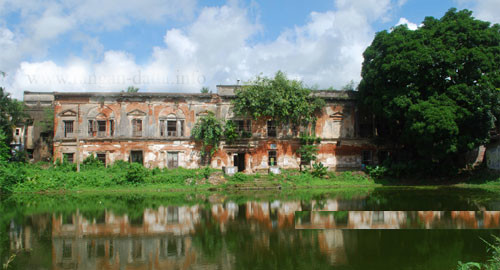
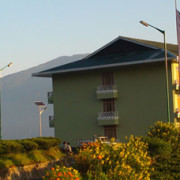
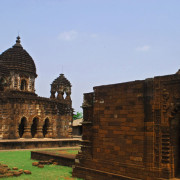
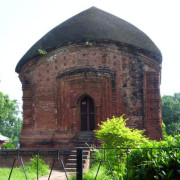
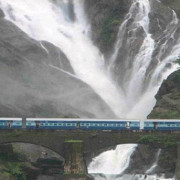
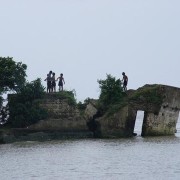
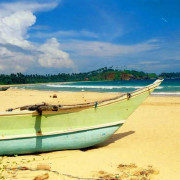
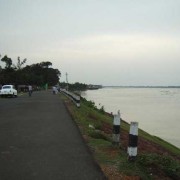
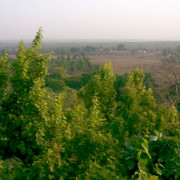


Leave a Reply
Want to join the discussion?Feel free to contribute!